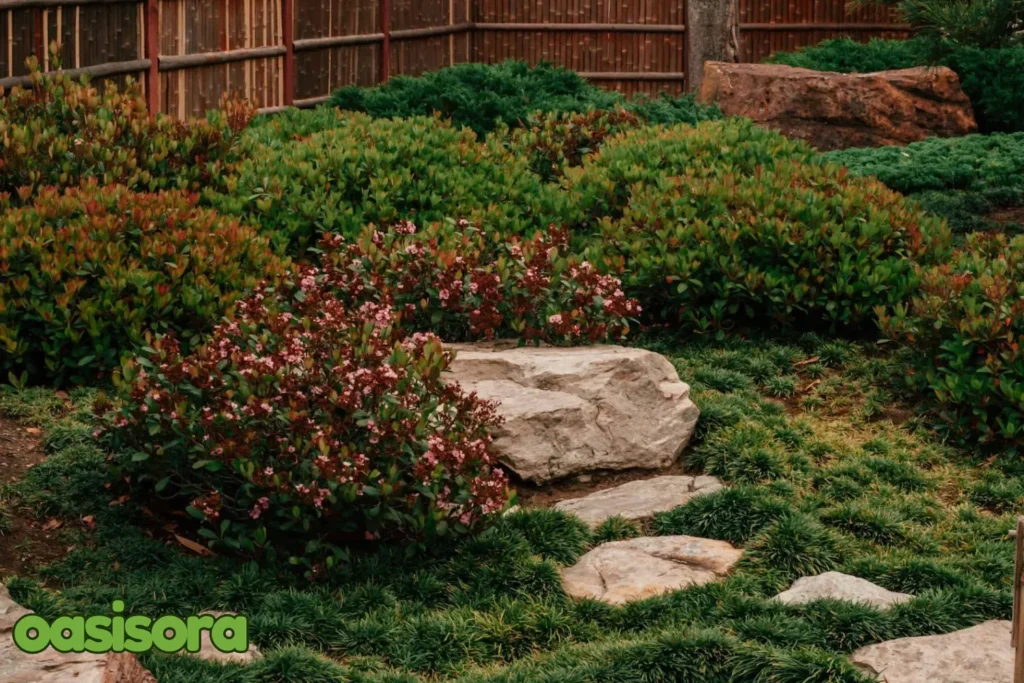
Zen gardens serve as an ideal place for relaxation and meditation. Although growing plants indoors have become increasingly common, classic outdoor gardens still have their attraction. Spending time in the natural world, whether in your home or a park, has a natural relaxing effect. Taking a moment to chill outside is essential in our busy life.
We found tranquillity in the city’s heart when we entered the Portland Japanese Garden. They possess specific plants with rocks, sand and gravel to increase the aesthetic value of the garden. With a focus on moderation and simplicity, the following article will help you choose the ideal 5 Zen garden plants for converting your dark area into a green landscape.
For a clear overview of flowering plants such as Japanese wisteria you must read post 26 Japanese Plants for Your Garden.
TL;DR
A dry landscape garden in Japan is the Zen garden. It generally includes the following the following few plant types:
- Austerity (Koko), Simplicity (Kanso), Naturalness (Shinzen), Asymmetry (Fukinsei), Mystery or Subtlety (Yugen), Magic or Unconventional (Datsuzoku), and Stillness (Seijaku) are the core fundamentals of a zen garden.
- Everlasting plants offer your zen garden year-round freshness and gentle aesthetic value
- Historically, bamboo is perfect for vertical screening.
- Japanese maples and cherry blossom trees are the best trees for your zen garden setting.
- Moss is a velvety, bright ground covering. Although it’s often observed in zen gardens, you can replace it with various groundcovers zen designs.
What are the 5 Zen Garden Plants?
Here, we present the five significant plants that boost elegance and harmony in your eco-friendly Zen garden. Every plant contributes to the pleasant environment that marks these quiet areas.
1. Evergreens
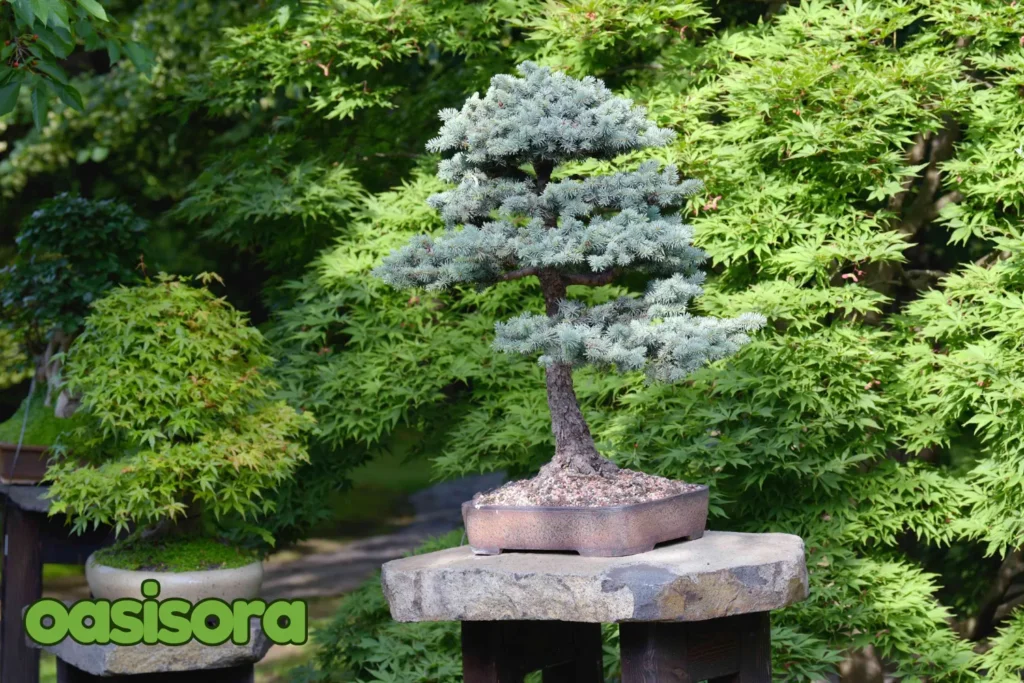
Evergreen Bamboo & Bonsai trees
Himalayan Pine and Bonsai are typical evergreen plants. They are wonderful, lush plants that offer greenery all year long. Their consistent presence in your gardens indicates resilience and the timeless nature of Zen philosophical thought. Zen gardens have perfectly groomed evergreens that balance the area by imitating elements of nature.
As the focal points, these shrubs and trees attract the viewer’s attention and offer an exciting contrast against a light hue of sand or gravel. They may also create privacy for you, adding to the calm atmosphere suitable for relaxation and meditation.
Bonsai
In Japanese culture, bonsai trees symbolize a harmonious balance. They give peace and beauty to a Zen garden, and their tiny stature makes them a special, stunning focal point.
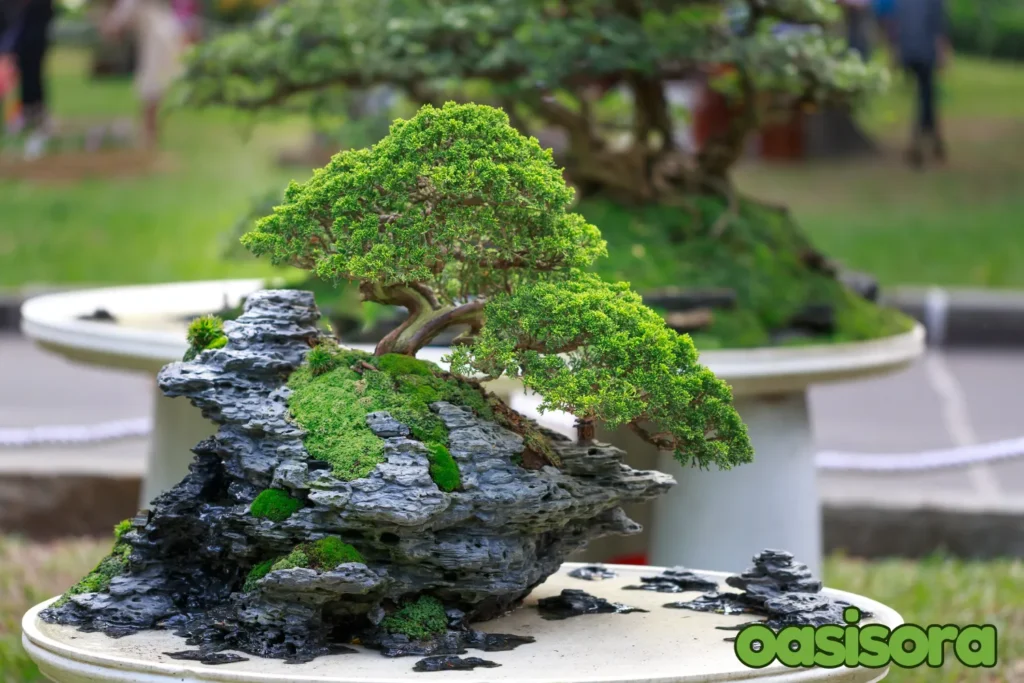
Bonsai
Himalayan Pine Are Optimal Zen Garden Plants
Your outdoor area will become more refined with the Himalayan Pine’s wonderful streaming shape and nicely spreading branches. You can easily maintain them as they are a robust plant that stays fresh all year round. The comforting effect of its smooth, fine needles makes it a lovely touch to your Zen garden.
Evergreens are perfect for small spaces such as courtyards and balconies.
2. Bamboo
Because of their pleasing appearance and historical value, varieties of bamboo are often used in classical Japanese Zen gardens.
In Zen theology, bamboo signifies durability, power, and adaptability. Its classy, moving stalks reflect lightness and movement.
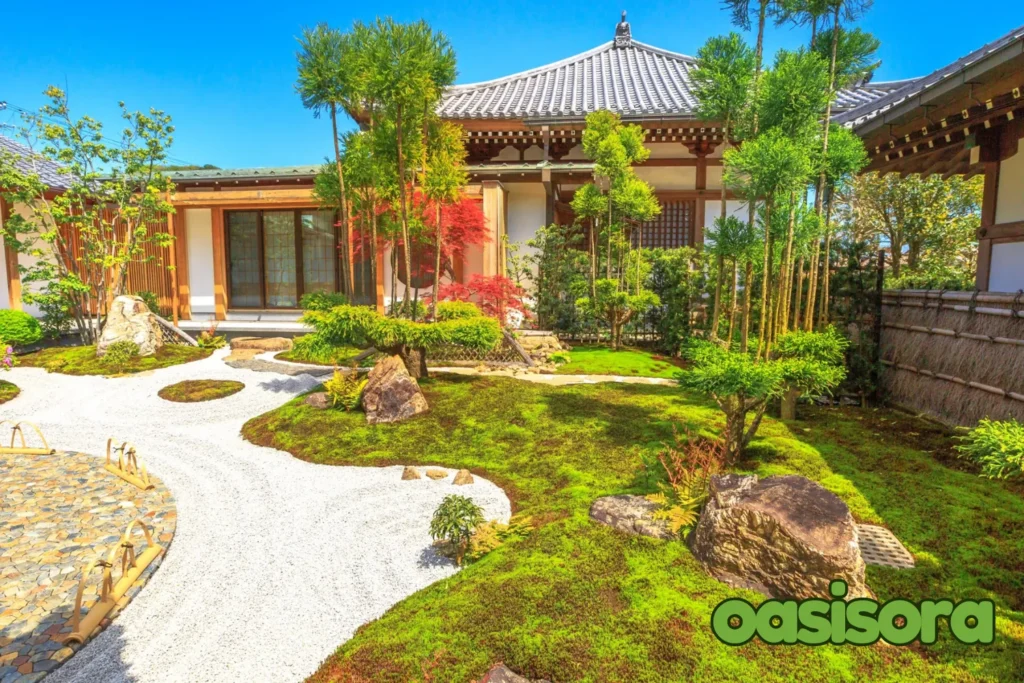
Bamboo
Bamboo is excellent for Zen gardens because of its tall, upright growth, which lends symmetry and acts as a natural safety screen for your garden. The gentle flutter of its leaves by the wind further improves the garden’s calm aura. Bamboo may yield gateways or covered pathways that give visitors an impression of mobility and adventure.
It is an evergreen, easy-to-care plant that reflects Zen purity beautifully and stays alive with green leaves all year round.
3. Japanese Maples
Beautiful Japanese maples are primarily found in Zen and historical Japanese gardens. The bright leaves’ colors, like green, crimson, and purple, contrast the muted tones of sand or gravel.
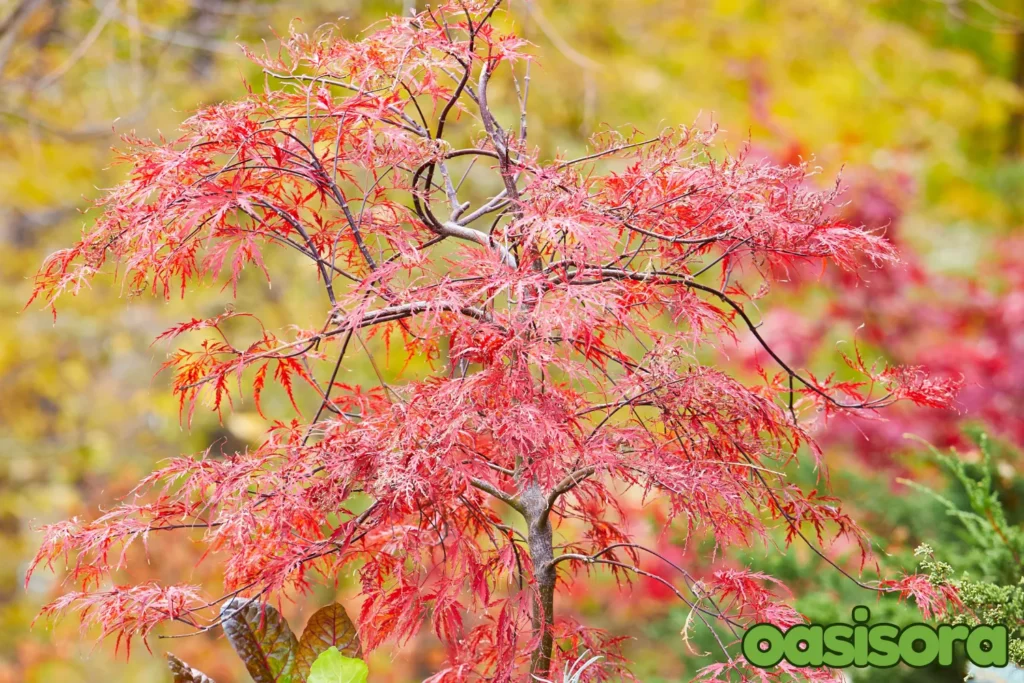
Japanese Maple
These Zen garden plants often serve as your garden’s main areas, capturing attention and bringing serenity.
Japanese maples complement peaceful Zen garden ideas by reflecting the seasonal changes and symbolizing the impermanence of life
They transform into different shades during the year. In the springtime, they have fresh leaves; pleasant shades in the summer; in the fall, they are vibrant; and in the winter, their empty branches form magnificent appearances.
The soothing rustle of leaves contributes to the restful atmosphere of the area giving you a perfect calm and quiet effect for meditation.
They need little cutting to align with the Zen idea of purity to preserve their shape. Japanese maples add unique splendor and value to the Zen garden plants, although relatively uncommon to other plants.
Overall, they give an exciting and cool touch to your small area.
4. Moss
Moss is a significant ground cover in Zen gardens. It provides a greenish carpet that works well with gravel, sandy soil, and rocks.
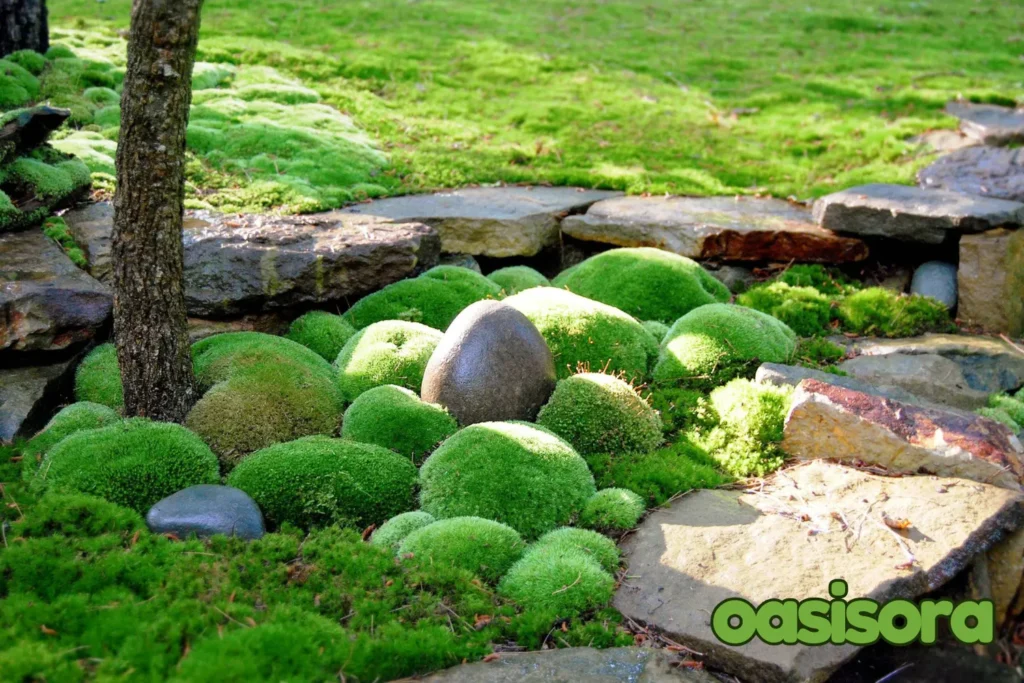
Moss
Its soft, velvety structure offers a comforting touch, allowing you for barefoot walks for a sensual interaction with the soil.
In Zen philosophy, moss promotes awareness and simplicity and symbolizes humility, modesty, and purity.
It requires simple maintenance. Moss stores soil moisture and reduces the need for watering.
The seasonal change in the moss’s color improves the garden’s appearance, which remains green all year round.
It mostly grows in humid shaded spots and gives softness and texture to the ground, rocks, and trees.
Due to its flexibility and ease of maintenance, it is appropriate for calm outdoor areas.
5. Cherry Trees
As you’ve seen due to their beauty and symbolic significance, cherry trees especially cherry blossoms are widespread in Japanese Zen gardens.
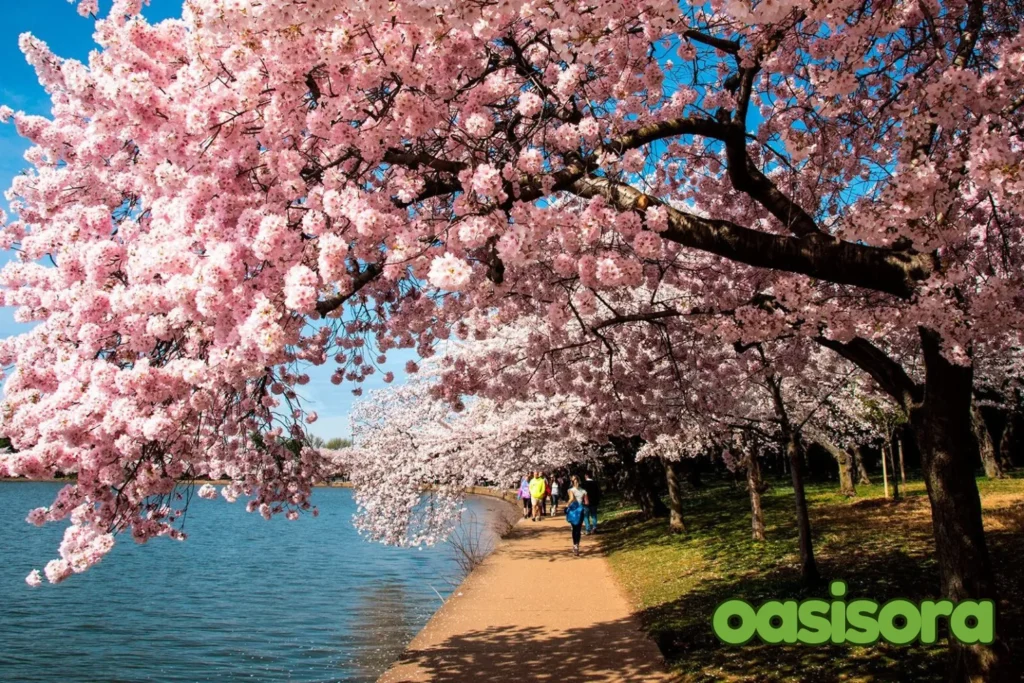
Cherry Tree
They are also known as sakura, represent the fluctuating nature of life, and fit in with Zen ideals of accepting evolution and concentration.
These trees form a lovely focus point in the garden when they blossom in springtime with a fantastic show of pink or white flowers.
The visual appeal and fragrance of cherry blossoms that are common Zen garden plants further improve the garden’s soothing surroundings, stimulating meditation and solitude.
Cherry petals can be placed in water features to represent the brief phases of life as they flow through the water.
In Japan, cherry trees have great cultural value that connects the garden to a beautiful past.
The blooming of cherries in spring seems like a renowned event that fills gardens with beauty and reminds you of life’s flowing moments.
If You Can’t Moss…
Groundcovers are necessary to achieve peace, equilibrium, and purity in traditional Japanese Zen gardens. The following are some choices for Zen-inspired groundcovers that often appear in these landscapes:
1. Lotus
The lotus is a pretty flower known for its lovely pink, white, and yellow petals, which represent utmost purity, bliss, and regeneration among Zen garden plants.
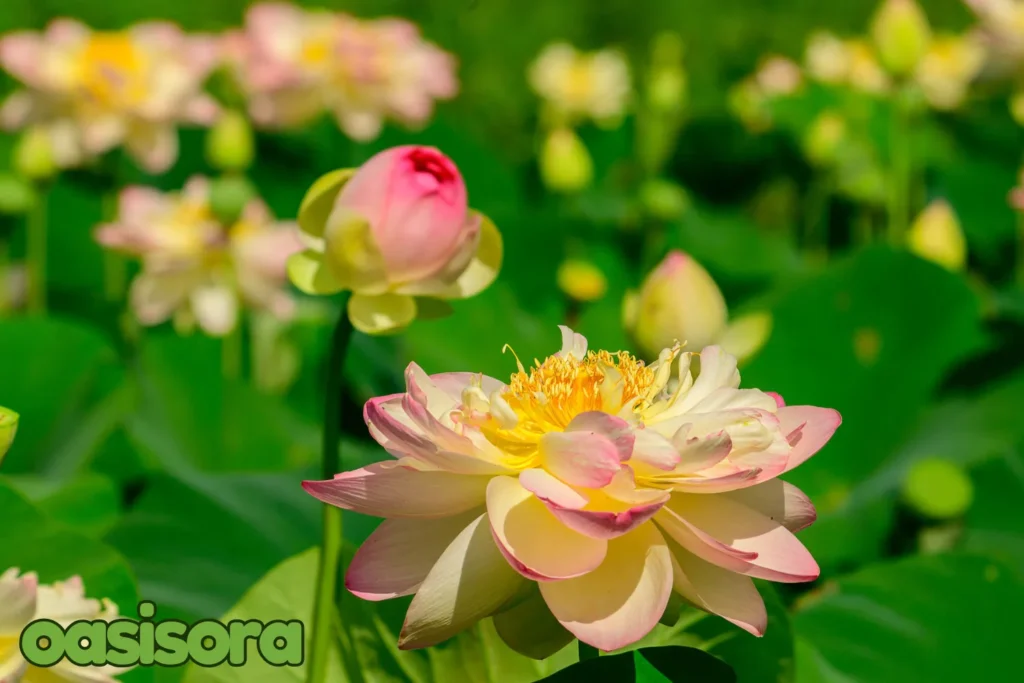
Lotus
It has big, round leaves that float on water and are relatively simple to grow in a pond or pot. Lotus brings an ethical element to a Zen garden, making it look less stressful and thoughtful.
2. Thyme (Thymus spp.)
Thyme shrubs have tiny leaves and grow slowly. It is a fantastic groundcover alternative because of its survival ability and crawling tendency.
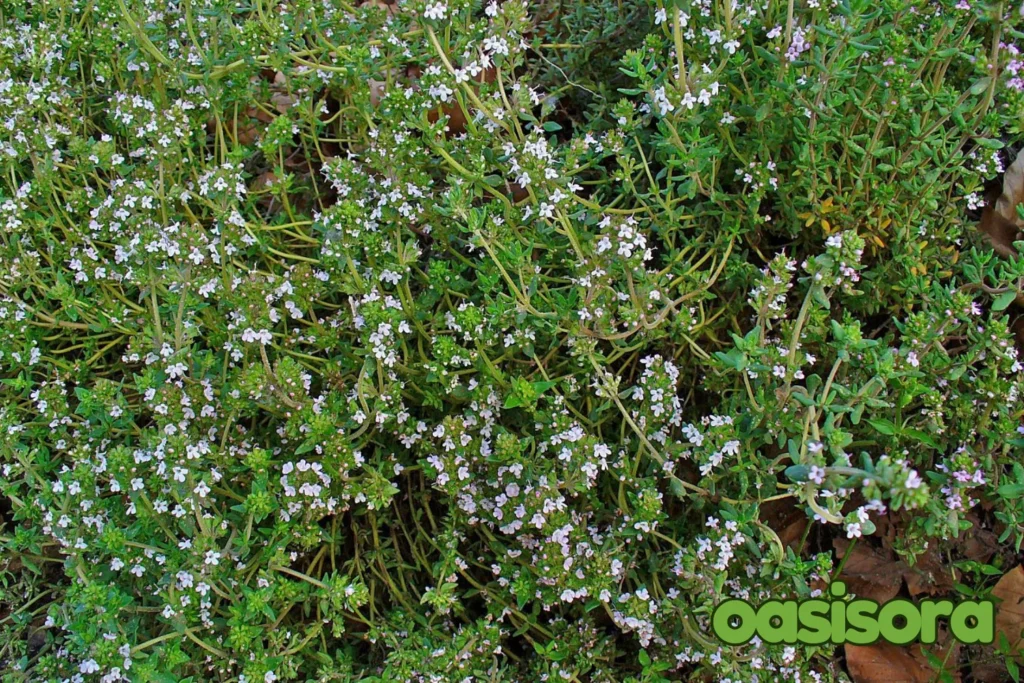
Thyme (Thymus spp.)
It possesses two important types Elfin Thyme and Woolly Thyme. These species also make unique coverings to ground for making a Zen garden an ideal place for you.
3. Sedum (Sedum spp.) Enhances Beauty of Zen Garden Plants
Such tropical groundcovers are prominent for having the capacity to tolerate dryness as well as low maintenance needs.
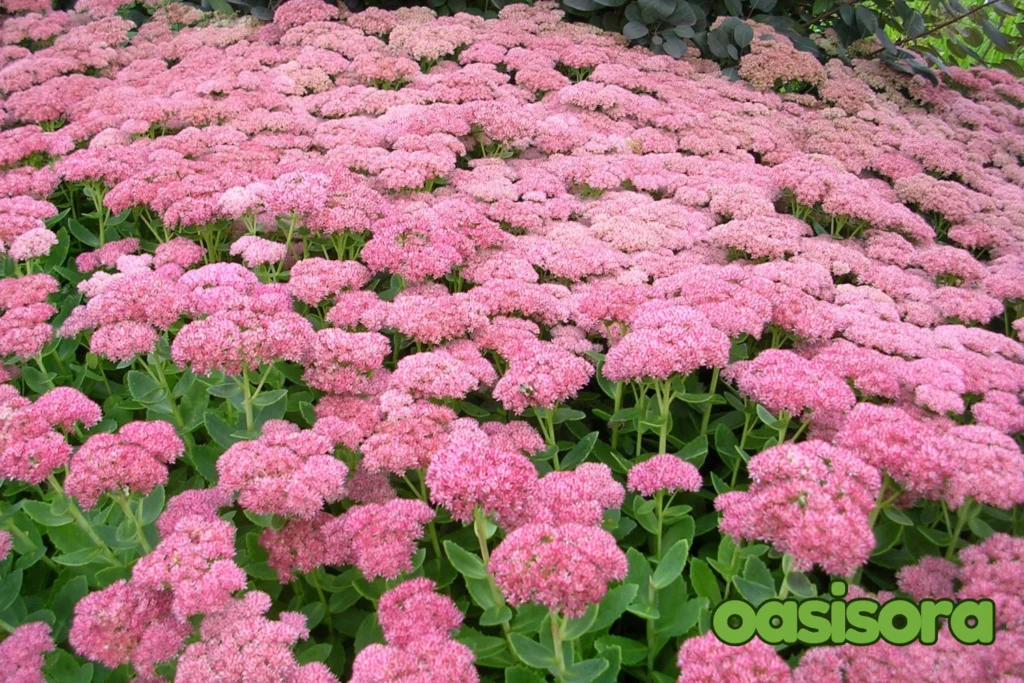
Sedum (Sedum spp.)
The two major types Stonecrop and dragon’s blood sedum are also significant for planting in Zen gardens for a beautiful look.
4. Dwarf Mondo Grass (Ophiopogon japonicus)
It is a native grass-like groundcover of Japan. Due to its dark green, curved leaves, it is also called an ornamental grass.
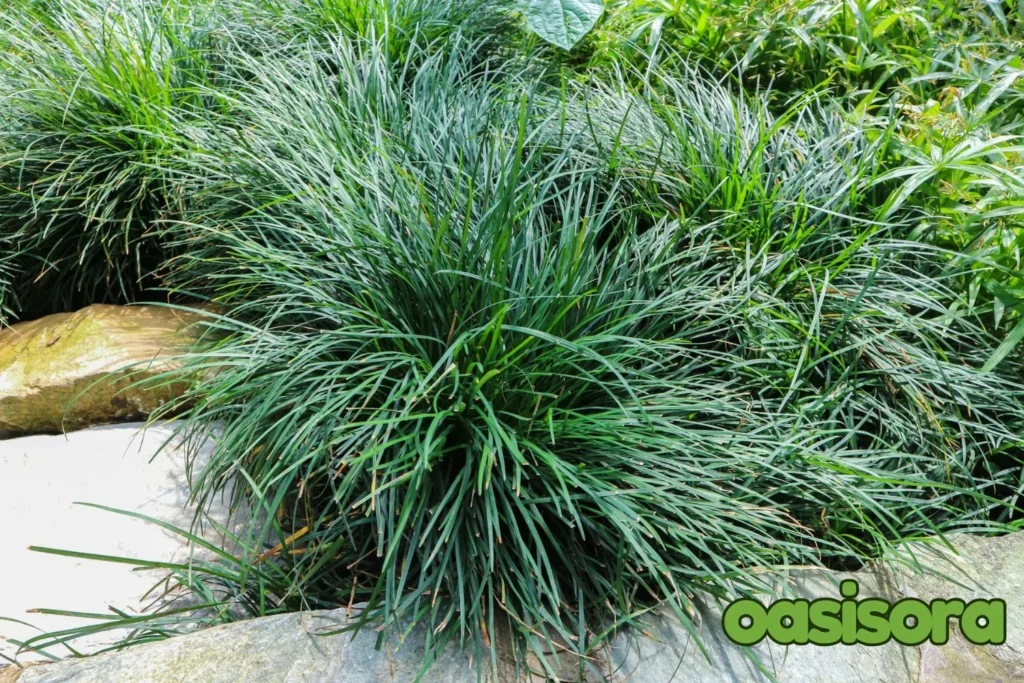
Dwarf Mondo Grass (Ophiopogon japonicus)
It gives your outdoor area a tidy, constant look and can be used to border other garden objects or define sidewalks.
5. Creeping Jenny (Lysimachia nummularia)
The flowing ground cover has bright green or golden-yellow leaves. It matches various elements in the garden by adding color and pattern.
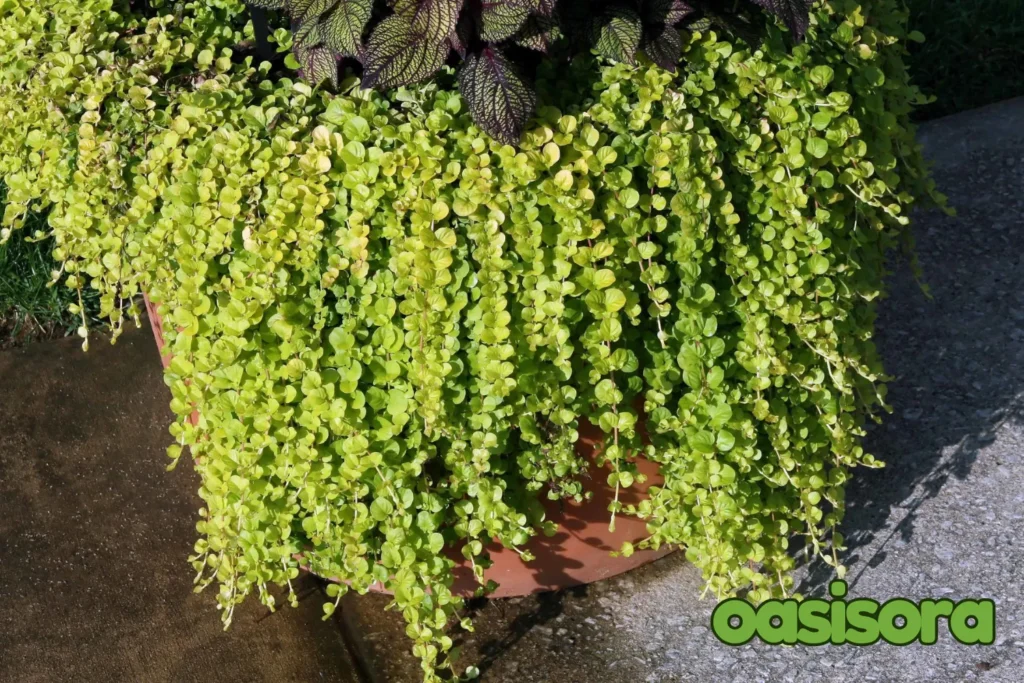
Creeping Jenny (Lysimachia nummularia)
6. Ajuga (Ajuga reptans)
In spring it has blue, pink, or white flower clusters with thick coverings of leaves.
It deals with more extensive regions and includes seasonal variations as well.
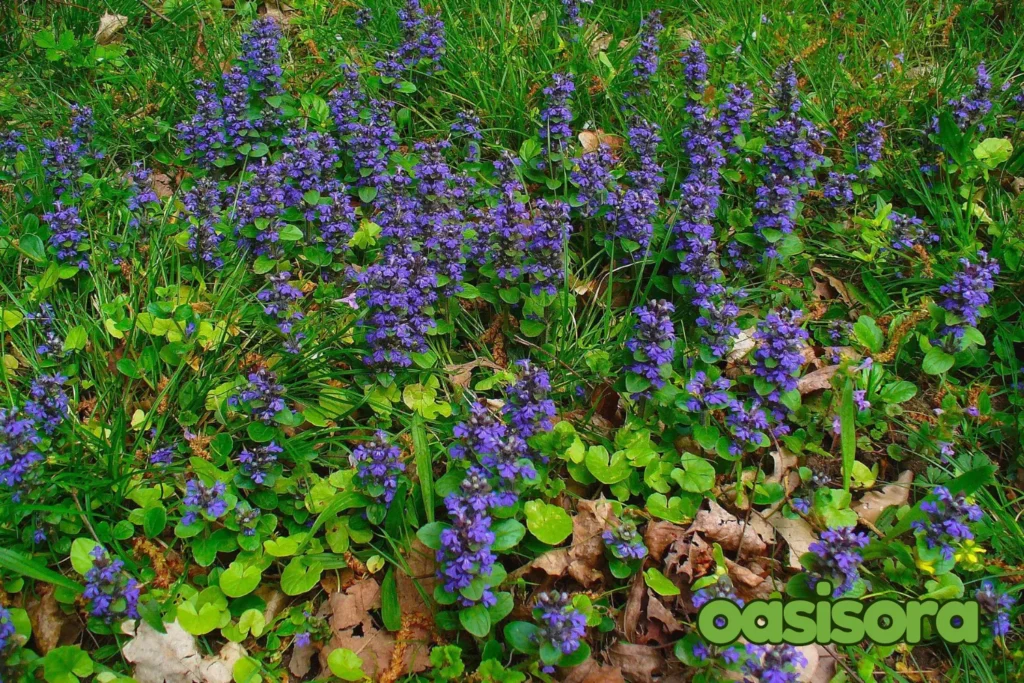
Ajuga (Ajuga reptans)
7. Corsican Mint (Mentha requienii)
Corsican is a small-sized plant that generates leaves. with a sweet odor and brings a feeling of freshness.
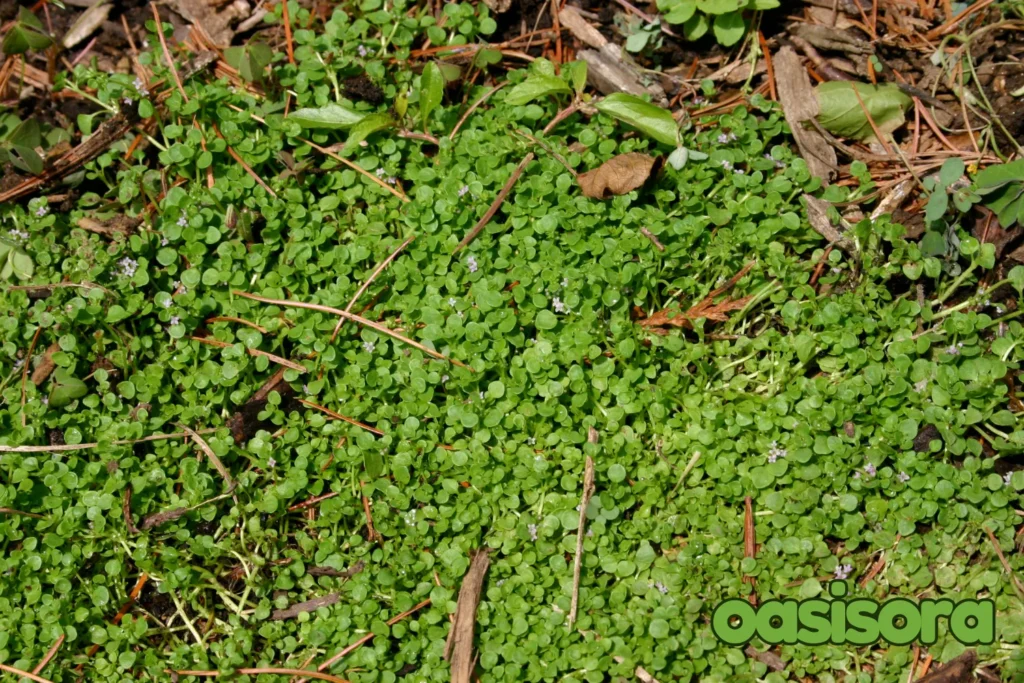
Corsican Mint (Mentha requienii)
while walking on these ground covers you feel the aroma and freshness released by their leaves.
8. Creeping Thyme (Thymus serpyllum)
These tiny plants produce bunches of small flowers with, lovely leaves to create a pretty cover on the ground.
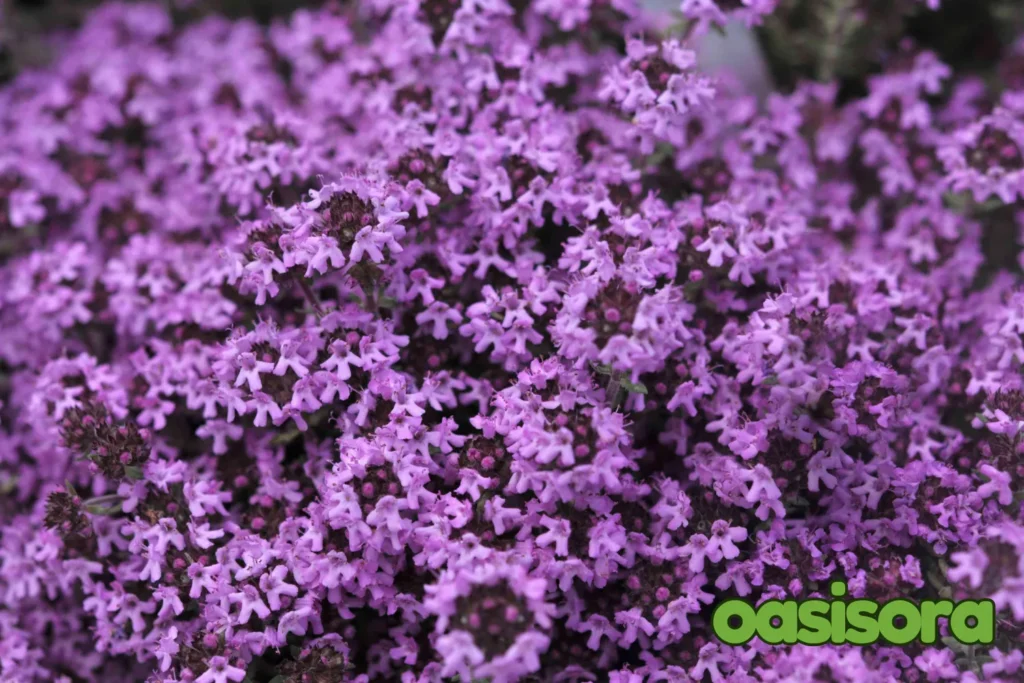
Creeping Thyme (Thymus serpyllum)
With little care, they are perfect for increasing a bit of texture and scent.to Zen garden.
9. Japanese Spurge (Pachysandra terminalis)
Spurge makes a layer on the ground with shiny green leaves that grow in shadow.
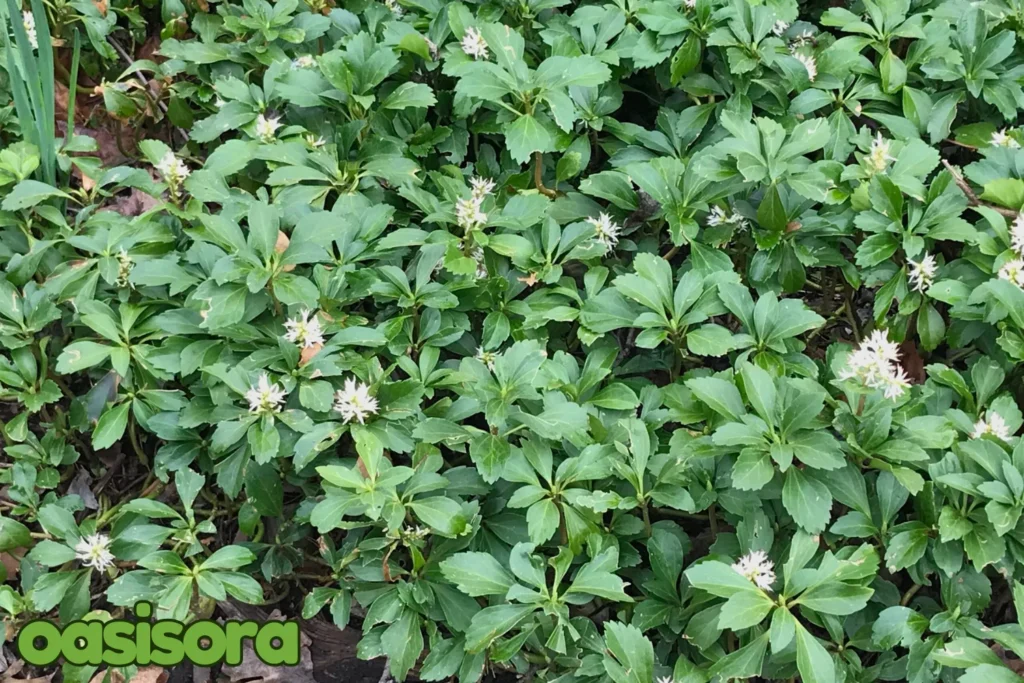
Japanese Spurge (Pachysandra terminalis)
It requires dark places and develops well in cool, damp conditions providing carpet to the Zen garden plants.
10. Elfin Thyme (Thymus serpyllum ‘Elfin’)
Because of its tiny stature and rigid growth habit, the small thyme kind is especially well-suited for detailed designs or confined areas in Zen gardens.
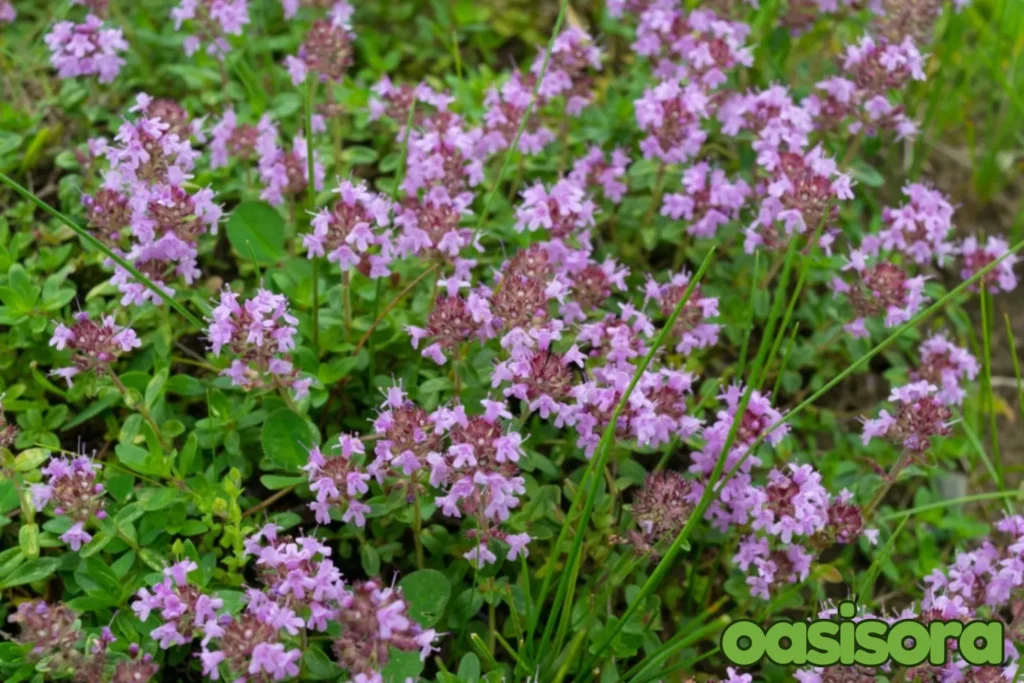
Elfin Thyme (Thymus serpyllum ‘Elfin’)
11. Hosta are Best for Zen Garden Plants
They grow in shaded areas and are suitable for creating a peaceful, quiet environment in a Zen garden.
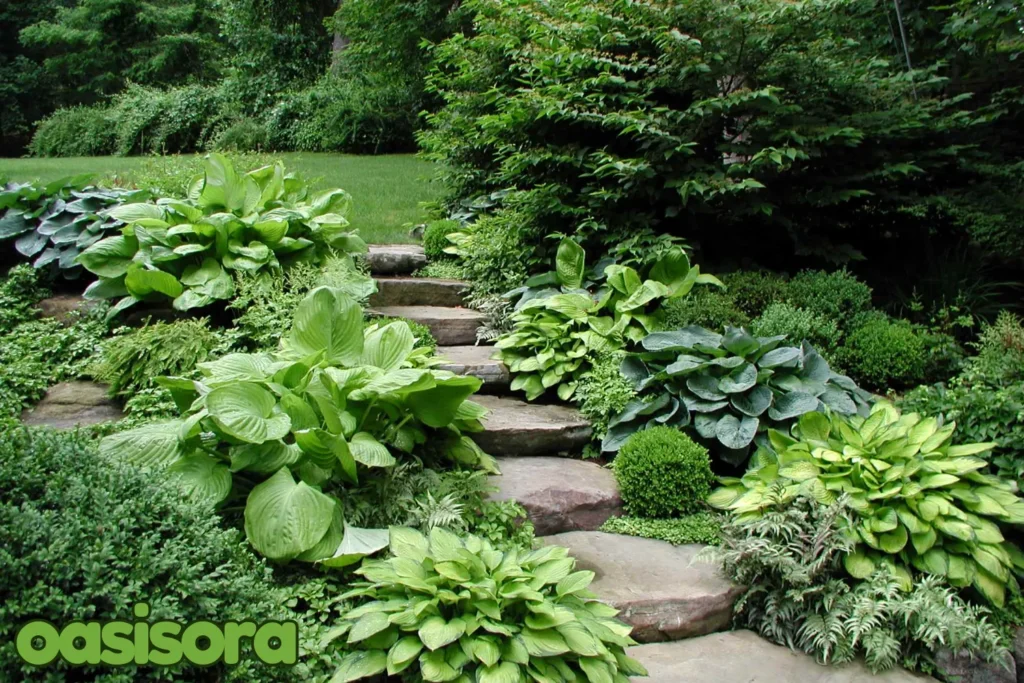
Hosta Plants
Hostas are famous for adding unique interest to gardens with their massive, lavish leaves that come in a range of colors and shapes.
With their silky edges, they enhance dark spots and are easy to cultivate as border plants. Some types even blossom in the summer to increase the garden’s beauty.
12. Azalea
Azaleas signal the beginning of spring and are an icon of beauty and affection in Japanese culture.
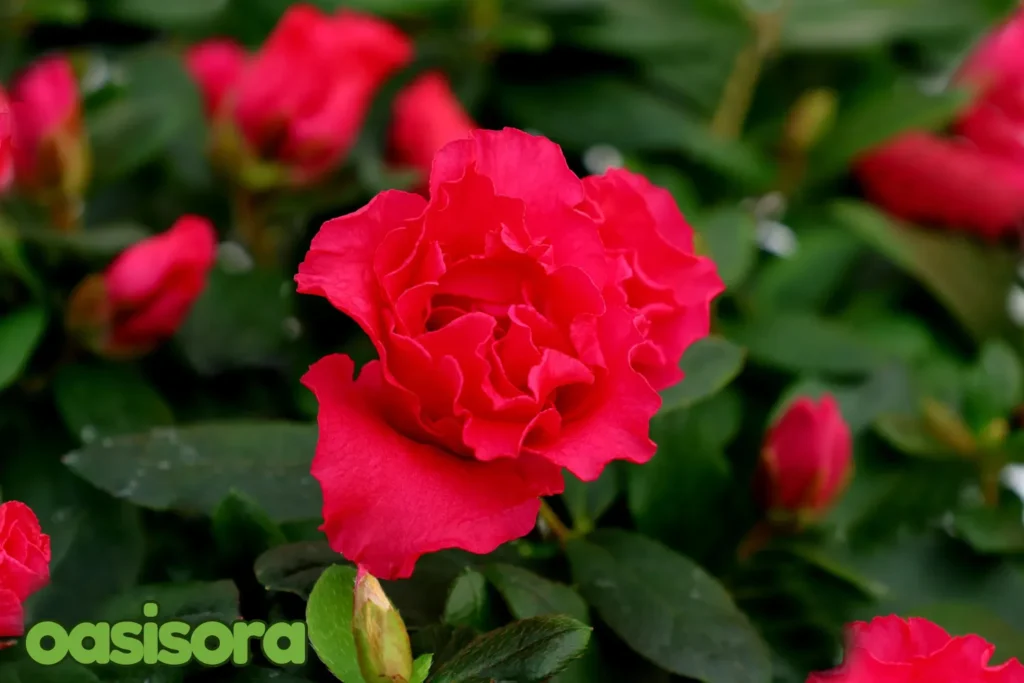
Azalea
These beautiful flowering shrubs, which come in pink, purple, red, and white, deliver beautiful green leaves and bright flowers to your Zen garden.
A few Azaleas even have magnificent autumnal color, keeping them fascinating throughout the year.
Introducing Azaleas to your landscape can offer significant meaning while boosting its peaceful setting.
13. Japanese Boxwood

Japanese Boxwood
A slow-growing Japanese boxwood is suitable for forming a neat border across your Zen landscape. Its tiny, dark green leaves lend your outdoor area an impression of elegance and beauty. The plant’s compact, broad growth habit and glossy, dark green leaves create an image of peace and order.
It also looks great when formed into topiary or an ordered hedge, which gives your outdoor area a greater fascination and luxury. Also, it adapts well to shaping and pruning, so you can simply maintain the plant in any shape and form you like.
14. Japanese Sedge
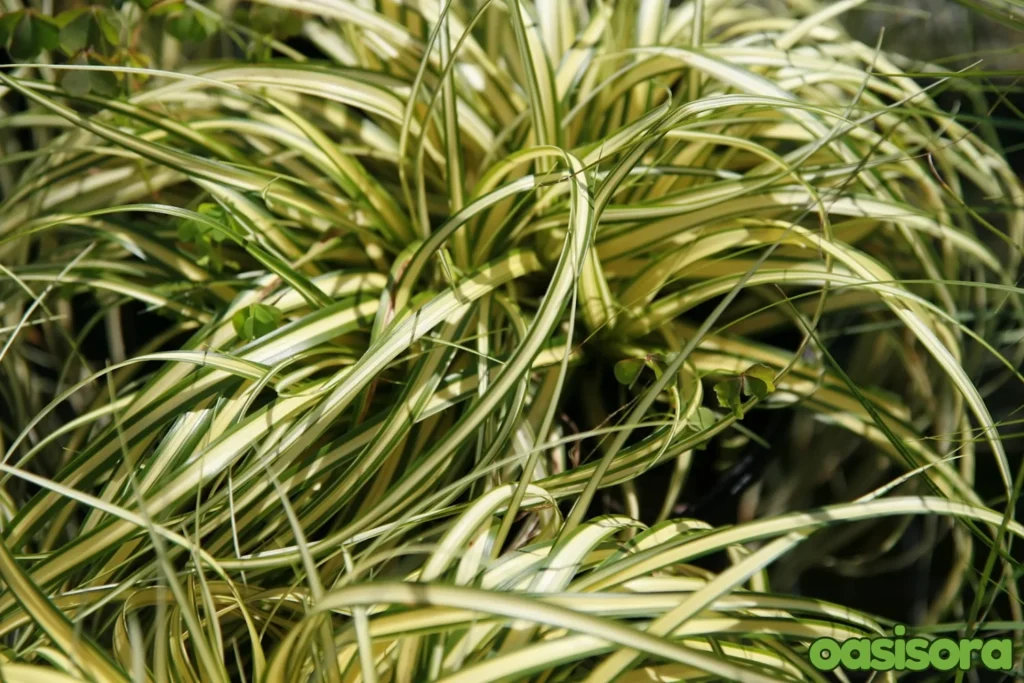
Japanese Sedge
Japanese sedge is an attractive plant which can provide your Zen garden a lot of charm and texture. Its soft and beautiful leaves provide your outdoor space a gentle, soothing look that might contribute to a peaceful, quiet setting.
It requires minimal care and is a very simple plant to maintain.Popular due to its versatility, which benefits your Zen garden in many ways, as it can grow in a variety of soil types and situations.
The plant’s thin, floppy leaves give it a special, striking look that increases its texture and sharpness.
Japanese sedge may be applied as a ground cover in your garden or as an attractive border or the cutting-edge.
15. Ferns (Soft and Relaxing Greenary for Tranquil Spaces)

Japanese Fern
Ferns have fine, lush, green branches that give them an appearance of movement and flow. The simple-to-grow, elegant collection of decorative ferns provides a striking contrast in form, color, and leaves.
They will glow like gems in any moist condition, whether it is in the sun or some shade.
When planted in vast areas or combined with other plants, ferns provide aesthetic appeal and grow in the lower light levels of a greenery region.
Consider the Climate Conditions and Your Zen Garden Site
The climate and site of your Zen garden are vital factors to note before you begin selecting plants.
Although such gardens can be managed in every climate, the plants you pick should suit the local environment. Here are a few factors to understand before planting:
1. Sunlight
While selecting Zen garden plants for your area, note the sunlight it gets daily.
Certain plants, like moss, need shade; others, like bamboo and Japanese maples, demand full sunshine.
Plants that match up to the lighting levels of your yard will grow efficiently with brilliant blooms.
2. Hardiness Zone
Understanding your hardiness zone is key to selecting plants that will survive in your Zen garden’s environmental conditions. Research plants suitable for your climate.
Tropical plants can flourish in warmer regions, while cold-hardy varieties like evergreens are better for areas with lower temperatures.
Such selection supports tolerance and beneficial growth all year long.

Map from Oregon State University
3. Soil Type
Identifying the type of soil is essential for deciding the suitable plants.
Because high moisture may harm plant condition and attractiveness, Zen gardens usually need soil that drains well.
For more adequate flow and an appealing environment, fit plants to your soil or make elevated beds.
4. Care Tips for your Backyard Japanese Garden
A Japanese garden needs organized attention to detail and an affection for keeping its harmony and beauty. Let’s analyze some crucial care steps for your green outdoor space.
Trimming and Pruning: Regularly prune all trees, shrubs, and bonsai specimens to keep the ideal shape while preventing overgrowth. Hanging branches that might interrupt desired landscapes or restrict paths should be cut down.
Weed Control: Check your garden regularly for weeds and take steps to remove them quickly. Pulling weeds by hand is an effective technique as it involves less soil disturbance. Think of an organic mulch layer for plants, as it retains soil moisture and reduces weed development.
Watering: Constant examination is necessary to maintain the water levels in typical water features like ponds, streams of gardens. Look for factors including soil moisture, weather, and the plant’s development stage while hydrating them to meet their requirements.
Upkeep of Mosses: Make sure the moss receives sufficient shade and moisture to be fresh. Clear off any debris or fallen leaves that may have collected on it to ensure its smooth growth.
Maintaining the Safety and Beauty of Stones and Pathways:
Take a look at your garden’s stepping stones, walkways, and rocks at regular intervals. To protect their inherent beauty and avoid crashes or falls, remove any dirt, debris, or moss formation. For perfectly solid and secure paths, readjust or replace any uneven stones.
Seasonal Adjustments:
Modify your gardening techniques to meet the requirements of the season. For example, to avoid clogging in ponds or other water features in the fall season, clear fallen leaves. During the winter, safeguard sensitive plants from cold temperatures or frost. Consider these periodic changes to maintain the harmony and organic rhythm of the landscape.
The Importance of Symmetry and Purity in Plant Selection
Symmetry and natural harmony are the primary elements of Zen gardens. Follow the below-mentioned tips while specifying plants:
1. Minimalism
Zen gardens must be clear with simple simple refinement. Therefore, select just a few varieties of Zen garden plants to achieve a calm, plain atmosphere
. Lesser plants can let everyone sparkle, adding to the garden’s pleasant vibe. They enlighten the natural beauty of the garden more.

varieties of Zen garden plants
2. Texture and Form
consider structure and shape for better aesthetic value while acquiring plants for your Zen garden.

Texture and Form for Zen garden
Various forms, such as the grand bamboo stems with the fragile Japanese maple leaves, combine to offer depth without losing simplicity.
The combination of textures grabs attention and promotes peaceful reflection.
3. Color Palette
Selecting plants for a Zen garden requires adhering to a compact scheme of colors.

Color Palette for Zen Garden
White, grey, and green are gentle colors that keep objects in order and generate a calming environment.
It’s better to avoid bright colors for a more soothing feeling to encourage meditation and concentration.
4. Simplicity and Balance
Taking influence from classic Zen principles of design, the secret to forming an ideal garden is to use plants that are simple and balanced. Pick plants with soft textures, obvious segments, and an organized growth pattern for peaceful and tidy surroundings.

Japanese garden precedants
Japanese gardens concentrate on simplicity and combining a small number of carefully chosen items to generate balance and harmony. This basic approach produces a calm environment by rejecting clutter and highlighting the essence of nature.
Final Words
Traditional Japanese Zen gardens frequently include these five plants to increase the natural and simple beauty of their small places.
By selecting them carefully and utilizing Zen design principles, you can develop an oasis that expresses your internal stability.
Remember that every plant, from velvety moss to glorious cherry blossoms, generates stillness and insight.
Spend considerable time choosing Zen garden plants making your space to serve as a display for your pleasant journey.
Gardening is not simply planting but creating a quiet, natural setting that promotes observation and tranquillity.
Carefully follow the planting process in your Zen garden and make your space the right place for relaxation.
A Zen garden often features carefully chosen elements like rocks, sand or gravel for raking, and minimalistic plants.
With using rocks in Zen gardens being essential for creating a peaceful, stress-free environment.
FAQs
What are the best plants for a Zen garden?
Evergreen trees like pine and bamboo, which represent power and clarity, are perfect plants for a Zen garden. Whereas, Japanese maples and moss add color and texture.
What should I put in my Zen garden?
A Zen garden mainly possesses carefully chosen rocks, sand or gravel for raking, and minimalistic plants to make space free of stress.
What does a Zen garden consist of?
A Zen garden consists of elements like sand or gravel to represent water, rocks representing mountains, and simple plants to promote harmony and tranquility.
What are the 7 principles of a Zen garden?
Austerity, Simplicity, Naturalness, Asymmetry, Mystery, Magic or Unconventional, and Stillness are major seven principles that create a mindful atmosphere.
How to start a Zen garden?
First of all select a small area, add sand, soil, or gravel, place rocks for making different structures, and use Zen plants like moss or bamboo for clarity and simplicity.
How to make a mini Zen garden?
For creating a mini Zen garden at your location, Put a shallow container filled with sand and small stones for a natural look. Then include tiny plants to form a beautiful natural scenery.
Are Zen gardens spiritual?
Yes, Zen gardens possess a significant spiritual aspect and have the goal of fostering peace of mind, understanding, and meditation.

4 thoughts on “5 Best Zen Garden Plants to Create an Oasis in Small Spaces”
Comments are closed.